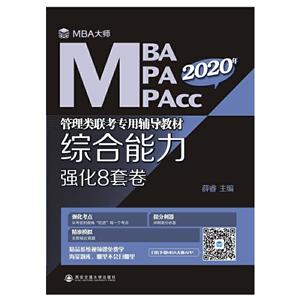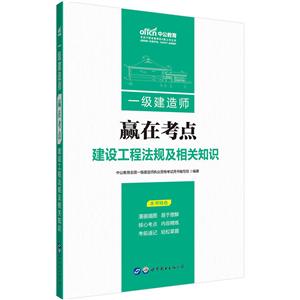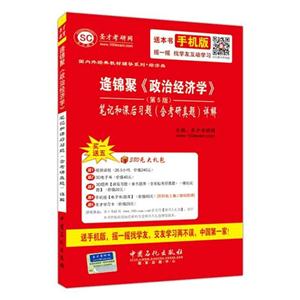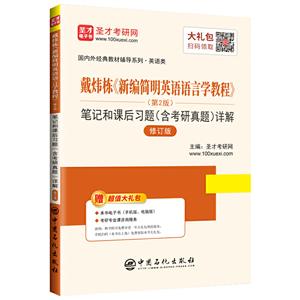新经典高等学校英语专业系列教材新编英语词汇学教程(新经典高等学校英语专业系列教材)(2020版)

|
新经典高等学校英语专业系列教材新编英语词汇学教程(新经典高等学校英语专业系列教材)(2020版)作者:Leon Cai,田贵森 开 本:其他 书号ISBN:9787513535953 定价: 出版时间:2020-04-01 出版社:辽宁少年儿童出版社 |
新经典高等学校英语专业系列教材新编英语词汇学教程(新经典高等学校英语专业系列教材)(2020版) 本书特色
适读人群 :大学本科,研究生及以上《新编英语词汇学教程》体系完整,内容全面。重视理论知识对学习者词汇学习的指导,帮助学生扩大词汇量、提高词汇应用能力。《新编英语词汇学教程》语言生动、例证有趣,缩小了学习者对理论知识的畏惧心理,有利于提升学习效果。
新经典高等学校英语专业系列教材新编英语词汇学教程(新经典高等学校英语专业系列教材)(2020版) 内容简介
《新编英语词汇学教程》是为我国高等院校英语专业学生编写的词汇学教程,也适合非英语专业的大学生和自学者用来学习和扩展英语词汇。《新编英语词汇学教程》共12章,包括词汇概述、构词法、词汇间的内在联系、词汇应用等模块,旨在使学生进一步理解英语词汇学基础知识、词汇结构、构词法、词与词之间的内在联系以及词与短语的应用,从而迅速提高词汇量和词汇应用能力,增强表达能力。《新编英语词汇学教程》强调练习在学习过程中的应用,设置了大量针对讲解的习题,供学生边学边练、从练中学;同时,强调词汇在现实生活中的应用。
新经典高等学校英语专业系列教材新编英语词汇学教程(新经典高等学校英语专业系列教材)(2020版) 目录
Table of Contents
Chapter 1 INTRODUCING LEXICOLOGY 1
1.1 The Scope of Lexicology 2
1.2 The Significance of Studying Vocabulary 3
1.3 Lexicology and Linguistic Studies 6
1.4 Research Methods in Lexicology 9
1.5 Questions for Further Study 12
Chapter 2 THE SOURCES AND DEVELOPMENT OF
ENGLISH VOCABULARY 13
2.1 The Origins of English Words 14
2.2 The Influences of Foreign Languages 15
2.3 The Formation of English Words 17
2.4 The Characteristics of Modern English Vocabulary 21
2.5 Questions for Further Study 24
Chapter 3 THE FORMS AND STRUCTURES OF
ENGLISH WORDS 27
3.1 Morphological Structures of English Words 29
3.2 Morphemes 29
3.3 Roots 32
3.4 Questions for Further Study 39
Chapter 4 WORD FORMATION VIA AFFIXATION 41
4.1 Lexical Prefixes 42
4.2 Grammatical Prefixes 62
4.3 Lexical Suffixes 64
4.4 Grammatical Suffixes 81
4.5 Questions for Further Study 93
Chapter 5 WORD FORMATION VIA
COMPOUNDING 95
5.1 Three Forms of Compounds 96
5.2 Structures of Compounds 98
5.3 Functions of Compounds 101
5.4 Characteristics of Compounds 101
5.5 Compound Nouns 102
5.6 Compound Adjectives 109
5.7 Phrasal Compounds 113
5.8 Questions for Further Study 115
Chapter 6 WORD FORMATION VIA OTHER
METHODS 117
6.1 Blending 118
6.2 Conversion 119
6.3 Borrowing 120
6.4 Clipping 127
6.5 Acronymy and Initialism 128
6.6 Questions for Further Study 132
Chapter 7 SENSE RELATIONS 133
7.1 Types of Meaning 134
7.2 Sense Relations 136
7.3 Polysemy 139
7.4 Homonymy 142
7.5 Questions for Further Study 146
Chapter 8 FIGURATIVE LANGUAGE 147
8.1 Simile 148
8.2 Metaphor 150
8.3 Personification 152
8.4 Dehumanization 153
8.5 Hyperbole 154
8.6 Allusion 155
8.7 Paradox 156
8.8 Onomatopoeia 157
8.9 Questions for Further Study 160
Chapter 9 LANGUAGE VARIATION AND WORD
CHOICE 163
9.1 Speakers’/Writers’ Choice of Words 165
9.2 Word Choice for Formal English 167
9.3 Words to Avoid in Formal English 185
9.4 Questions for Further Study 187
Chapter 10 COLLOCATIONS 189
10.1 Noun Collocations 190
10.2 Verb Collocations 193
10.3 Adjective Collocations 198
10.4 Adverb Collocations 200
10.5 Preposition Collocations 204
10.6 Conjunction Collocations 207
10.7 Questions for Further Study 209
Chapter 11 DICTIONARIES AND VOCABULARY
LEARNING 211
11.1 Types of Dictionaries 212
11.2 Information in Dictionaries 215
11.3 Monolingual and Bilingual Dictionaries 216
11.4 Principles of Selecting a Dictionary 217
11.5 Questions for Further Study 219
Chapter 12 ENGLISH VOCABULARY LEARNING
STRATEGIES 221
12.1 Classifications of Vocabulary Learning Strategies 223
12.2 Suggested Methods in Learning Vocabulary 226
教材 研究生/本科/专科教材 公共课
在线阅读
- 最新内容
- 相关内容
- 网友推荐
- 图文推荐
| [高考] 2022 西安电子科技大学《软件工程》大作业答案 (2022-04-25) |
| [家长教育] 孩子为什么会和父母感情疏离? (2019-07-14) |
| [教师分享] 给远方姐姐的一封信 (2018-11-07) |
| [教师分享] 伸缩门 (2018-11-07) |
| [教师分享] 回家乡 (2018-11-07) |
| [教师分享] 是风味也是人间 (2018-11-07) |
| [教师分享] 一句格言的启示 (2018-11-07) |
| [教师分享] 无规矩不成方圆 (2018-11-07) |
| [教师分享] 第十届全国教育名家论坛有感(二) (2018-11-07) |
| [教师分享] 贪玩的小狗 (2018-11-07) |






